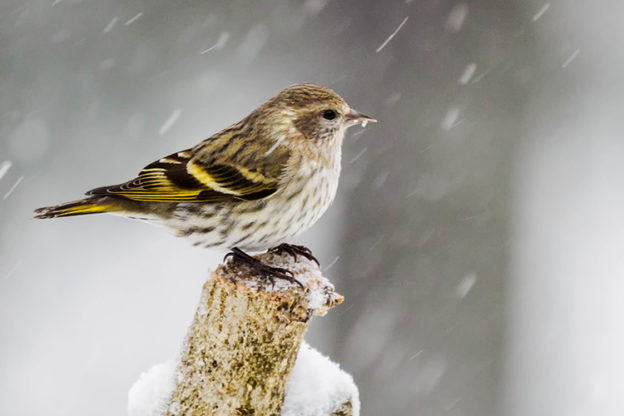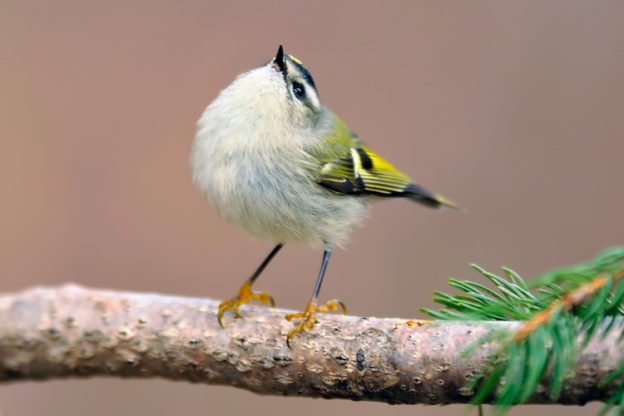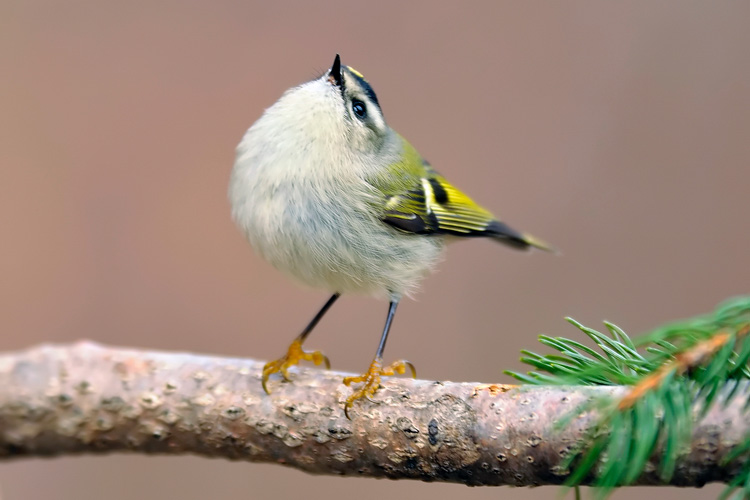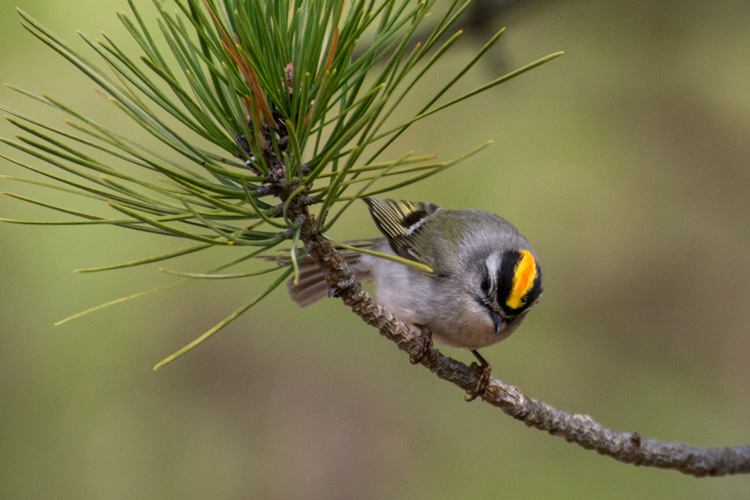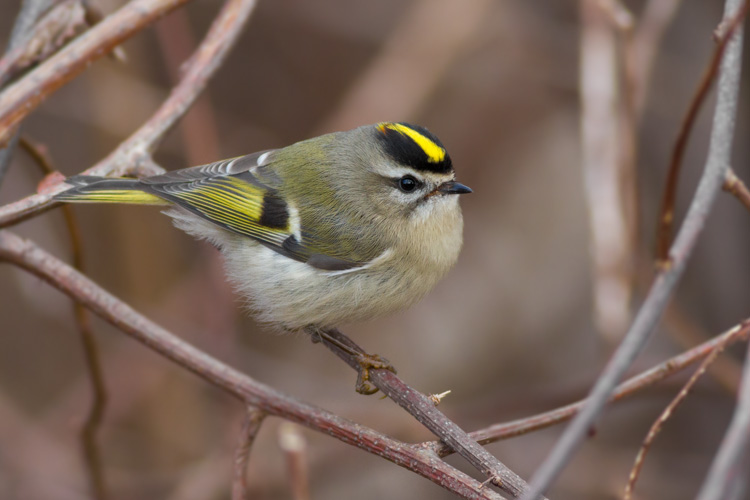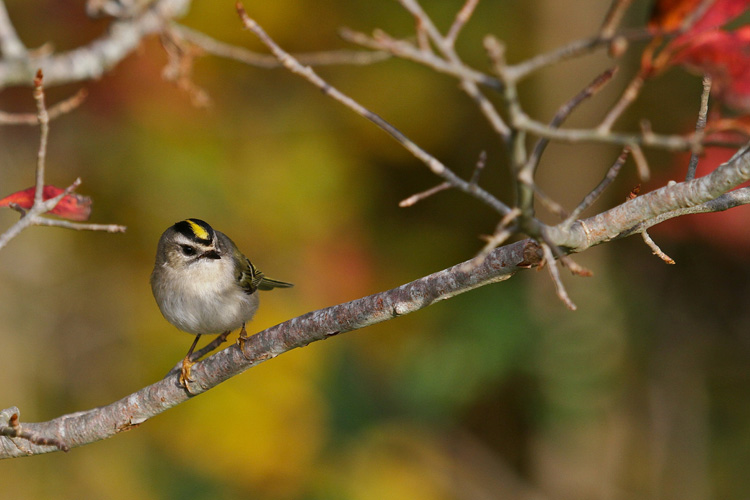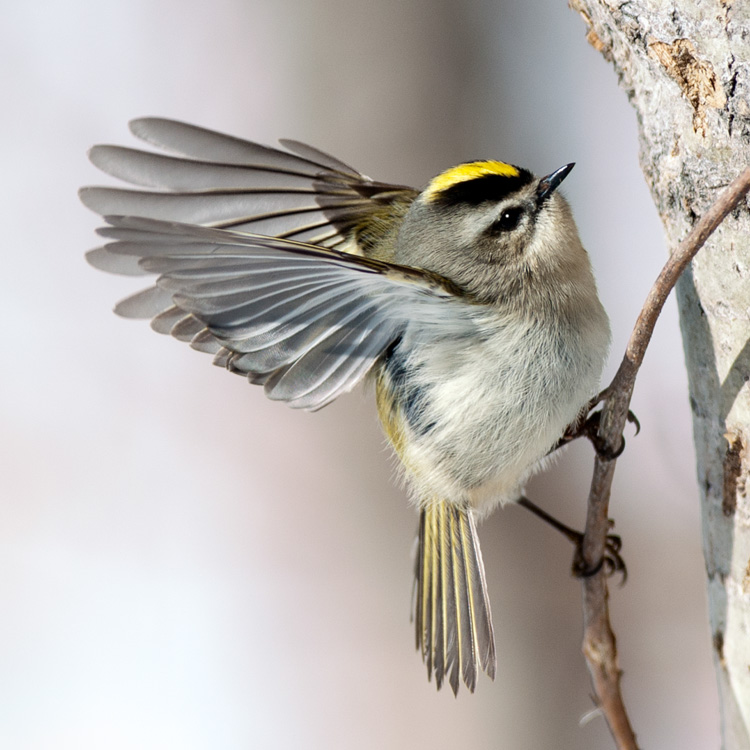Most bird species overwinter in the same general area from year to year. Not so with some finches. Around eight species of winter finch become nomadic in winter, sometimes crossing the continent in search of food.
One reason these birds don’t stick to an annual pattern is the annually shifting availability of their favorite foods. If conifer seeds and mountain-ash berries are abundant in Canada, winter finches stay put on their northern breeding grounds. In less fruitful years, they head off in search of their next meal.
Biologists and birders in Canada who keep track of seed availability are forecasting that this will be a good year for finch movements. Here’s what to look for this winter.
Purple Finches
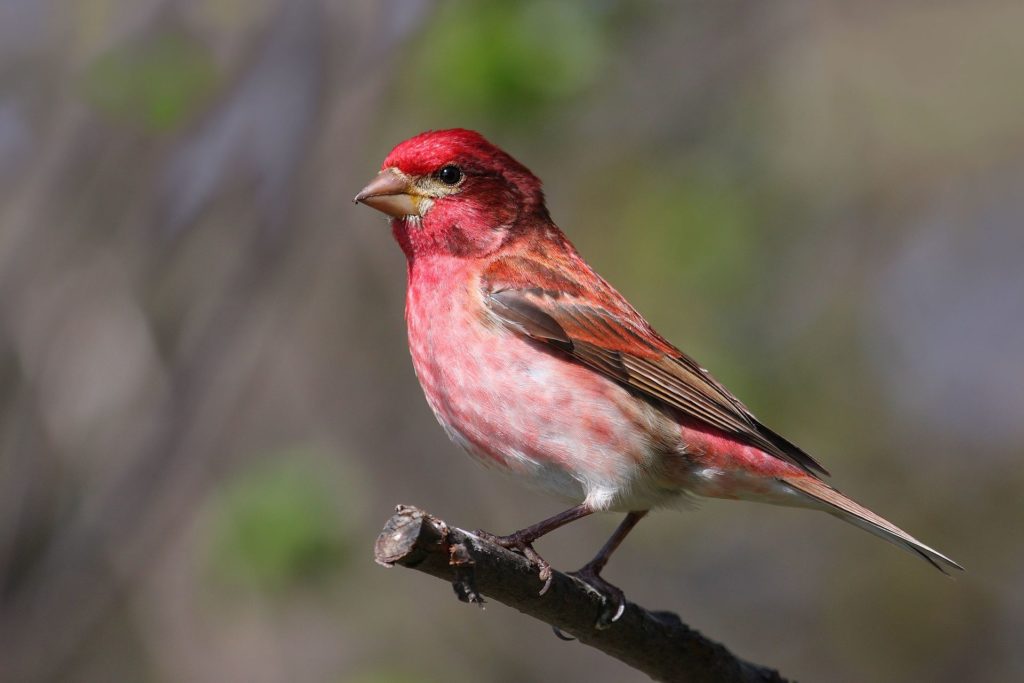
Purple Finches had a great breeding season in Canada, in part due to an outbreak of spruce budworm, their go-to summer food. But the new hordes of yearling birds will need more seeds and berries than what’s available this winter in the north, and we’re already seeing a big movement of them in Massachusetts.
At feeders, Purple Finches love to eat safflower seed, but they’ll also stop for black-oil sunflower and thistle seed. Unlike the similar-looking House Finch, Purple Finches have a reddish wash that extends all the way down their wings and back, and a thicker bill.
Pine Siskins
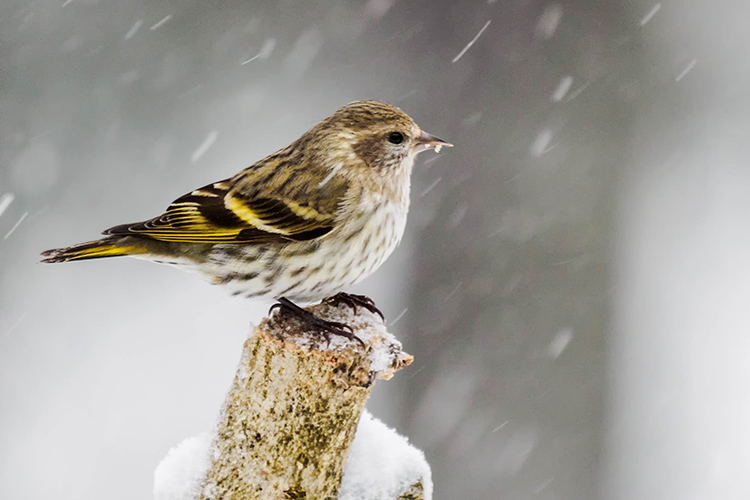
Siskins are the stars of the show so far this year. Pine Siskins have arrived early in Massachusetts in spectacular numbers (with some observers recording overhead movements of more than 2,000!) At feeders, these finches don’t stop for much other than thistle seed, or other seeds small enough for their narrow bills.
Evening Grosbeaks
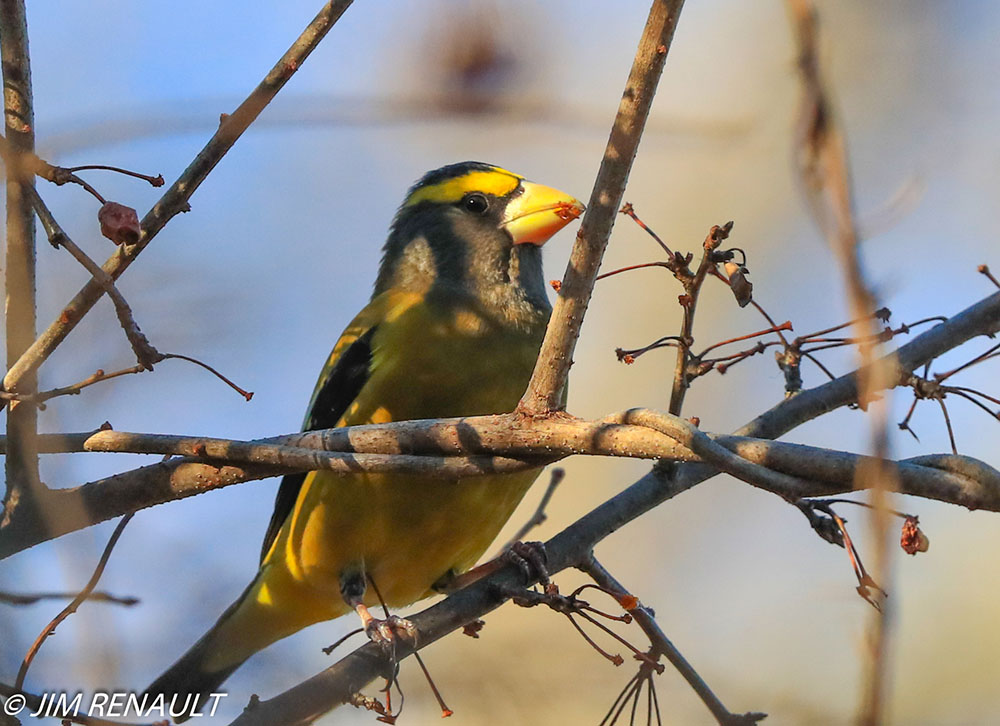
These bold-colored finches last irrupted into Massachusetts in 2018, a bit more recently than the other two finches on this list. Major irruption years were infrequent in the 1980s through 2000s, so it’s a pleasant surprise to see these birds again just two years after their last big movement through the region. At feeders, these thick-billed birds prefer larger seeds, like black-oil sunflower.
Bonus species: Red-breasted Nuthatches
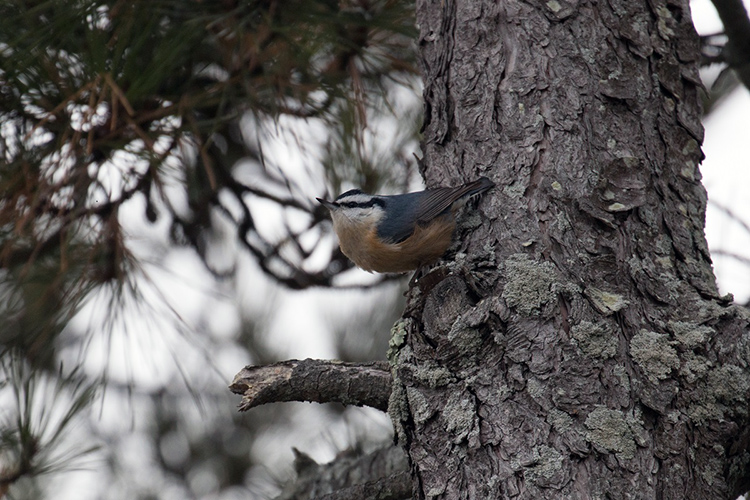
While not technically a finch, this species is nearly as nomadic. Red-breasted Nuthatches are year-round residents in high-elevation coniferous forests, and normally, they only visit the rest of the state in winter. But this summer and fall saw several big pushes of Red-breasted Nuthatch into Eastern Mass as well, and it’s a real possibility that they’ll continue through the winter in great numbers.
All of these species have arrived earlier than in most irruption years. That leads to a question of whether or not they’ll persist all winter in Massachusetts. It’s possible that these birds are mostly transients on their way even farther south: feeder-watchers are reporting that flocks of winter finches are showing up for a day and leaving, and grosbeaks and siskins have already been reported as far south as the Gulf Coast.
This is a great winter to hang up some feeders and see what happens!


